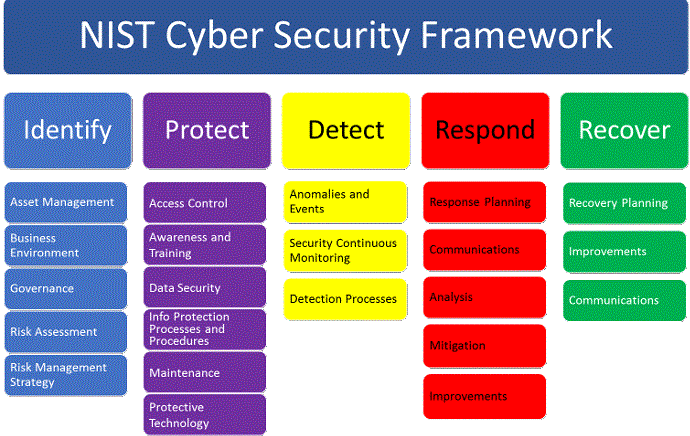Utilizing NIST Standards to develop a Cybersecurity Framework
The National Institute of Standards and Technology (NIST) is a US government agency that provides guidelines and standards for various fields, including cybersecurity. NIST has developed a Cybersecurity Framework (CSF) that organizations can use to manage and reduce cybersecurity risks. XeneX helps customers develop a cybersecurity strategy by following the NIST standards. The 5 subtasks are identified in the illustration below. If you are interested in improving your cybersecurity posture and using the NIST framework to develop short- and long-term roadmaps with clear goals, timelines, and budget, please contact sales@xenexSOC.com.
Here are the steps to utilize NIST to develop a cybersecurity framework:
1. Identify and categorize your organization's information systems: The first step in utilizing NIST to develop a cybersecurity framework is to identify and categorize your organization's information systems. This involves understanding the types of information systems that your organization uses and the criticality of the information they contain.
2. Determine your organization's risk tolerance: The next step is to determine your organization's risk tolerance. This involves understanding the level of risk that your organization is willing to accept and the potential impact of a cybersecurity incident.
3. Use the NIST CSF to assess your current cybersecurity posture: Use the NIST CSF to assess your current cybersecurity posture. This involves identifying your organization's cybersecurity risks, vulnerabilities, and threats and mapping them to the NIST CSF categories.
4. Develop a cybersecurity strategy: Based on the results of the assessment, develop a cybersecurity strategy that is aligned with the NIST CSF. This involves identifying the areas where your organization needs to improve and developing a plan to address those areas.
5. Implement and monitor the cybersecurity framework: Implement the cybersecurity framework and monitor its effectiveness. This involves regularly reviewing your organization's cybersecurity posture and making adjustments as necessary.
Communicate with stakeholders: Communicate with stakeholders, including senior management, employees, and external partners, about the cybersecurity framework and its implementation. This can help ensure that everyone understands their role in maintaining a strong security posture.

